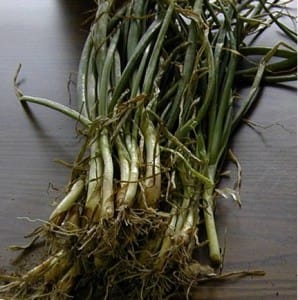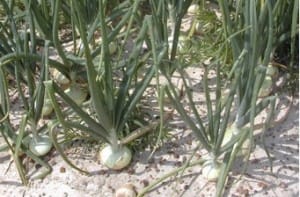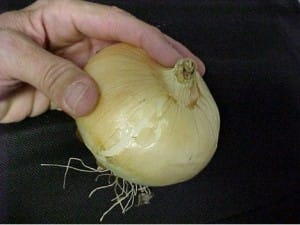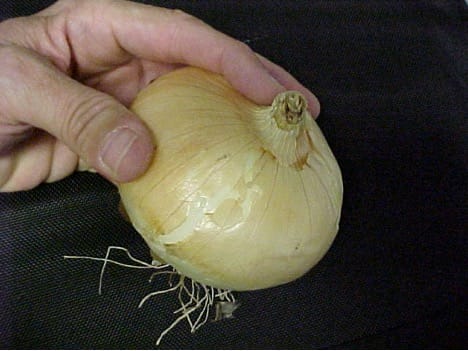Onions are a wonder in the Georgia garden. They are cool-season crops that require very little work. Ever wanted to try growing them? Now is your chance as Willie Chance gives us valuable instruction. Willie says….
The Cherokee rose is the state flower and the brown thrasher is the state bird. What is the state vegetable? The Vidalia onion!
Actually, most gardeners cannot grow onions and officially call them ‘Vidalia onions’. Production of certified Vidalia onions is limited by a marketing order to a specific area in south-central Georgia. However, gardeners can grow sweet onions by following certain practices.
Onions have two major flavors. Sugars make them sweet but pungent chemicals make the onions ‘hot’. A sweet onion has enough sugar to make it sweet but more importantly – it has a low level of the pungent compounds. The most important factor in making onions ‘sweet’ is having low levels of these pungent compounds. Levels of these compounds in the onion are controlled by proper variety selection, fertilization, watering, and time of planting.

Growing Georgia Sweet Onions
Sweet onions grow best on sandy soils. Onions will grow on clay soils, but expect hotter onions.
Till the soil well, mixing in fertilizer and lime. Use a soil sample to determine fertilizer and lime rates. If you do not have a soil sample, use 1 pound of 10-10-10 per 100 square feet of garden when you first plant the onions.
Sweet onions grow from specific onion varieties! Buy Vidalia onion transplants. Look for them in your garden center or in the Farmer’s & Consumer’s Market Bulletin. Onions grown as Vidalias are generally a Granex variety–a relatively flat, mild onion.
Select transplants that are about the diameter of a pencil. Plant transplants one to two inches deep and 6 inches apart from mid-October to early December, Water them in well immediately after planting.
Fertilize onions again in December and January with 1 pound of 10-10-10 per 100 square feet each time. For these early fertilizations, try to find a fertilizer with a sulfur content no higher than 6%. Over-fertilizing with sulfur makes onions hotter and makes them taste less sweet.

After January 31, use fertilizers without sulfur. Fertilizers without sulfur include calcium nitrate, sodium nitrate, or potassium nitrate. Apply these in mid-February and again in early March at ½ to ¾ pound per 100 square feet. These can be hard to find so contact area garden centers, farm supply stores and hardware stores. If you cannot find one of these, use half rates of ammonium nitrate.
When watering – wait until the soil dries slightly and then apply three-quarter inch of water each time. You can mulch around onions to conserve water and prevent weed growth.
Onions bulb as the day length increases in the spring. Keep onions well watered at this time. They may need up to an inch and three-quarters of water per week at this time.
Harvest onions as the onion necks begin to get soft and tops fall over. This will probably be in late April or early May in central Georgia.

Clip off the tops and let onions dry well – preferably in a dry, slightly shaded spot. The onions will be ready to store when the necks are dry all the way to the interior. Sweet onions typically do not store well so keep them in a cool, dry spot.
For the latest information on growing vegetables contact your local UGA Extension Agent or see the publication Vegetable Gardening in Georgia.
Willie worked as a UGA Vegetable Specialist in the early 1990s. During that time he conducted research and variety testing to help farmers to grow sweeter Vidalia onions! All of us onion lovers appreciate that, Willie!
Happy Gardening!
- ParSLAY the Day! - June 12, 2024
- 6th Annual Great Southeast Pollinator Census - May 28, 2024
- Are you ready for Pepper Palooza? - July 5, 2023

Sweet onions remind me so much of my childhood! Dad used to make himself sweet onion and peanut butter sandwiches. My brother and I were not convinced they were edible when we were young but man are sweet onions good now!